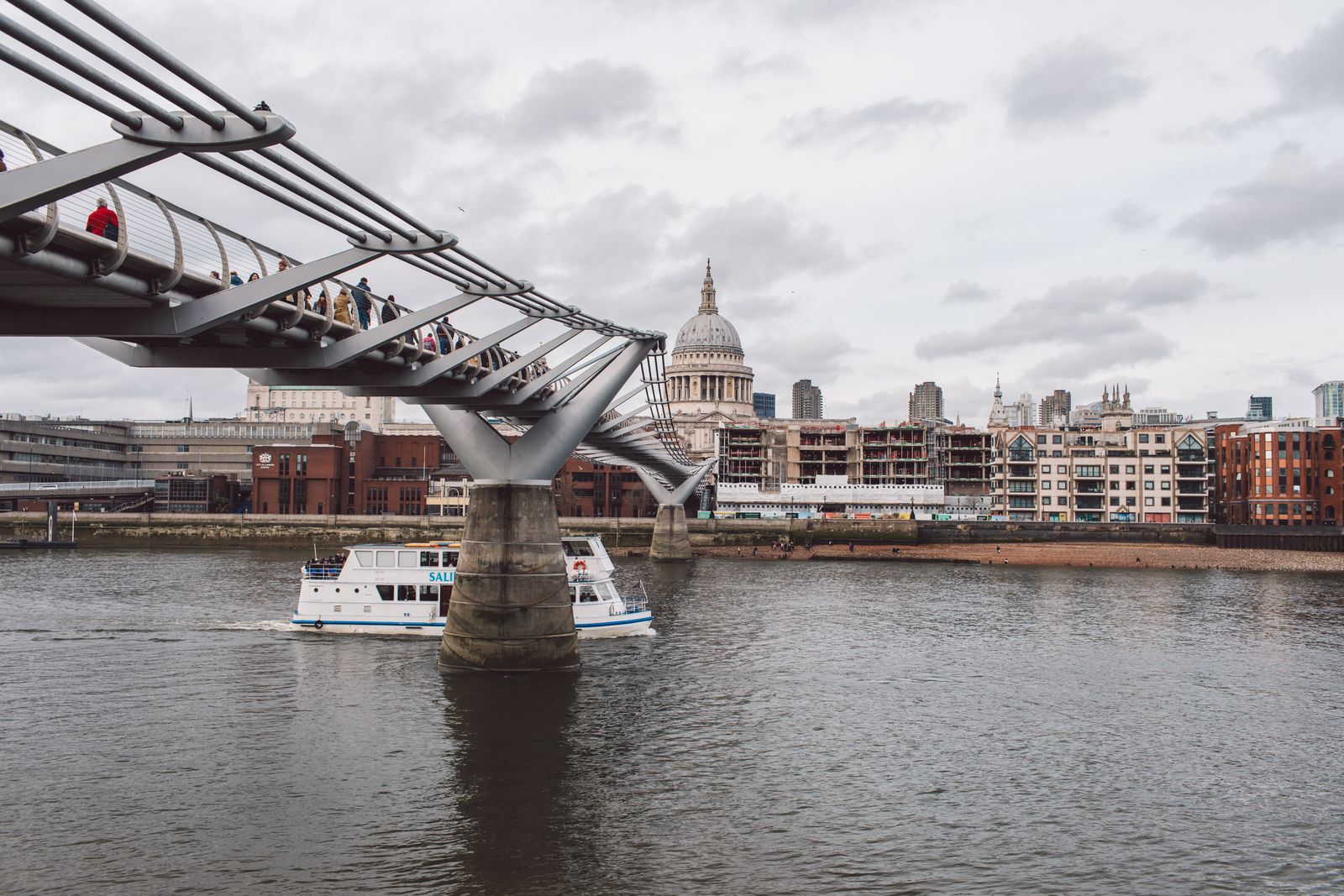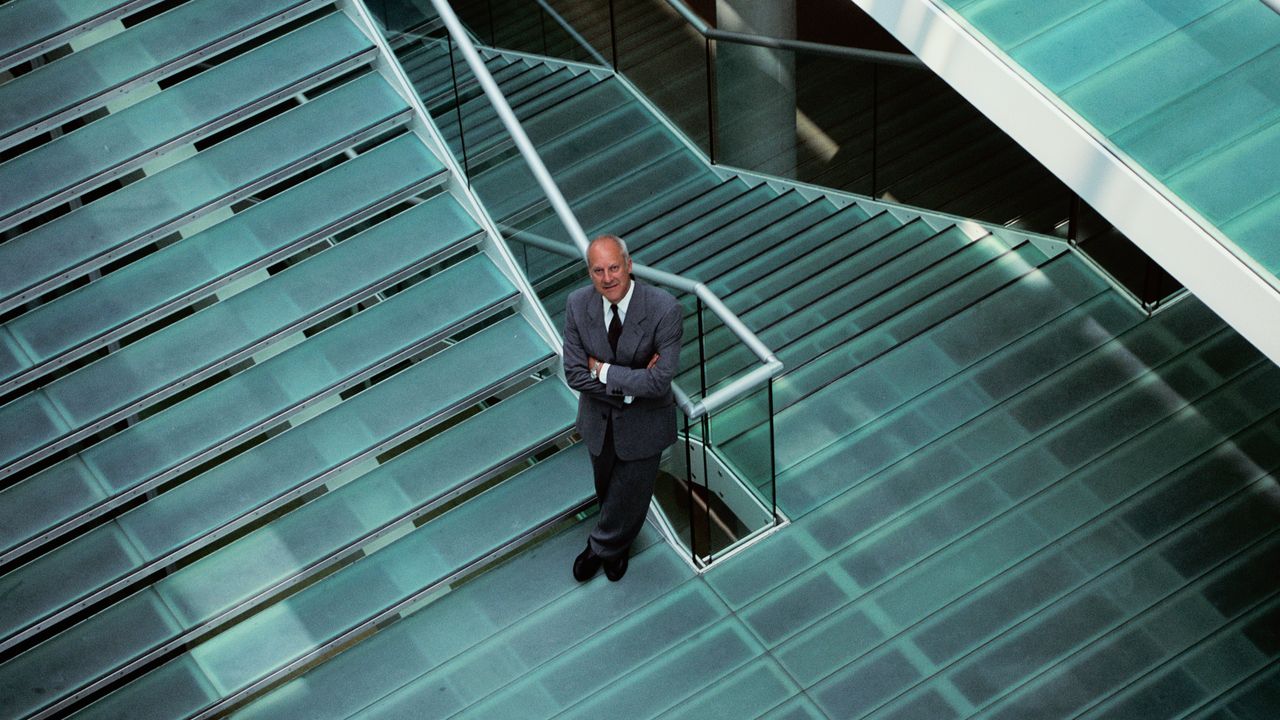Today, Foster+Partners has 20 offices in 12 countries and directly employs over 2,500 people worldwide. Along the way Foster has won multiple accolades, been awarded with a life peerage in 1990 (he resigned from the House of Lords in 2010 because he had moved his primary residency to Switzerland), earned a pilot’s licence and even battled life-threatening illnesses. Throughout, design has remained both a passion and a calling.
“Design is really a social agenda,” he explains. “It exists to improve the quality of our lives, both materially and spiritually. It is about concepts of beauty, about convenience, about working sustainably with nature to create resilient communities.”

When it opened in 2000, the Millennium Bridge was the first pedestrian-only bridge across the Thames in 100 years. It features a unique shallow, stressed-cable suspension that allows for unobstructed views of St. Paul’s Cathedral.
Cristian Bortes
“The biggest lesson we can learn from history is that cities in crisis always bounce back stronger.”
Norman Foster
Whether it’s healing Germany’s divided past by installing a skeletal cupola atop the Reichstag building in Berlin that “placed the public above the government” or the Millennium Bridge in London, an engineering breakthrough that ushered in a new era for the South Bank, space-age resorts in Saudi Arabia or dynamic new gateways in Venice that employ high-performance, lightweight materials – like those found in supercars – to build new transportation infrastructure for the floating city, Foster’s designs are constantly shaping how people live, work and play around the world. Yet, it’s the lessons from history that guide his vision for the future.
.png)
The Gateway to Venice’s Waterway –a 37-metre-long structure at the the Arsenale. Its outer shell is derived from lightweight technology found in racing cars such as the Porsche 917.
.png)
Foster on a Schiller bike in Venice. Norman Foster Foundation and Porsche plan on extending their collaboration beyond architecture, delving into the future of automobile mobility.
“We question, we challenge, and wherever possible, we innovate. We try to make change for good, but we are always aware of the historical dimension,” he explains. “And that is that cities in crisis always bounce back stronger. Whether it’s the Lisbon earthquakes and the birth of seismic structures, cholera in New York that made way for modern sanitisation, or the Great Fire of London that led to the terraces, and I could give you more examples, the biggest lesson is that cities bounce back stronger.”

